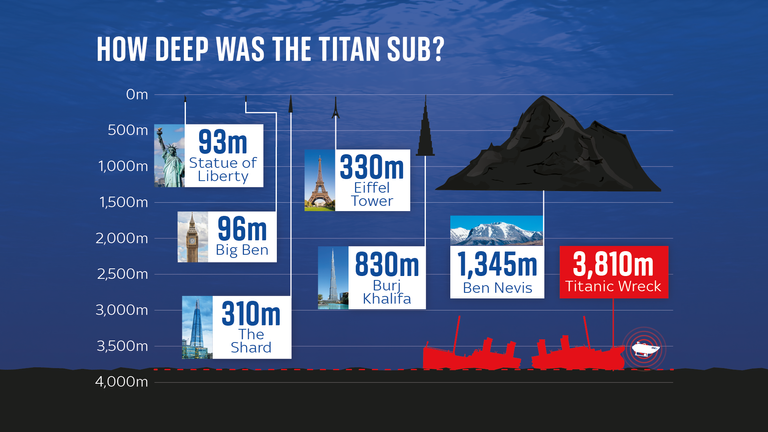
If a week is a long time in politics, a year is a long time by anyone’s standards, so it’s easy to forget everything that’s happened.
From the joys of Barbenheimer and England women’s World Cup run to the tragedies of war in Ukraine and Gaza, we’ll take you through some maps and charts that sum up the most memorable stories from the past 12 months in the UK and around the world.
January
Thor the Walrus made waves on England’s northeast coast in January, reaching Blyth in Northumbria after disturbing New Year’s Eve celebrations in Scarborough the week before.
He had first been spotted in the Netherlands in November 2022, and in February he was seen again in Iceland on his way back up to the Arctic.
Scientists estimated the tusked beast to be at least three years old and weighing around 750kg, about the same as a Smart Car.
But they debated whether his journey south was related in some way to warmer seas and the melting of sea ice, which Arctic sea mammals use to rest, hunt and digest food on.
Sea temperatures reached levels well beyond those ever seen before in 2023.
February
24 February marked the anniversary of Russia’s war in Ukraine.
After the initial invasion, countries across Europe and North America particularly rose to Ukraine’s aid with financial and military assistance.
But during a press conference on 14 December this year, Vladimir Putin suggested Russia was now well placed to win the conflict because Ukraine will eventually exhaust Western support.
The latest data from the Kiel Institute for the World Economy shows that new aid commitments to Ukraine have dropped to their lowest level since 2022.
Read more: Data and forensics coverage of Ukraine this year
Ukraine’s missing children: How 15 orphans escaped Russia and the thousands left behind
Russia tries to hide crimes as it rebuilds destroyed Mariupol into model city
Torture 24 hours a day: Survivors reveal the dark cruelty of Russia’s detention centres in occupied Ukraine
March
Industrial action was a theme running through the whole of 2023, driven by disputes around pay and working conditions amid the rising cost of living.
With 553,000 working days lost to strike action, March was the most impacted month (in data available for the year so far up to October).
Current levels of disruption were last seen over 30 years ago, although are still a fraction of levels seen in the 1970s and early 1980s. As of October, 3.7 million working days had been lost to strikes over the previous 12 months.
Walkouts in the education and health and social care sectors contributed to three-quarters of total days lost for the year, while the transport industry (including train and tube drivers) caused 11.5% of the days lost.
It’s worth noting that an individual transport worker striking can have knock-on effects on a larger number of passengers and the wider economy that are harder to pick up in the data, so these days may punch above their weight.
April
Food price inflation finally started to fall in April, after two years in which prices had risen by almost a third.
Prices are still rising fast – they’re 9.2% higher now than they were last year as of the latest figures – but the rate they’re going up has slowed from a high of 19.6%.
Food inflation stayed high longer than the overall rate of inflation, which takes into account things like energy prices, labour costs and goods as well as food.
At the time of writing, halving inflation is the only one of Rishi Sunak’s five pledges for 2023 that has been achieved.
The national debt is growing, the economy is not, and the NHS waiting list is half a million people longer than it was at the start of the year.
Almost 30,000 people have crossed the Channel on small boats this year, down by more than a third in 2022, but higher than the total for 2021 and significantly up on the amounts from pre-pandemic years.
May
King Charles and Queen Camilla were crowned in May, in front of the year’s biggest TV audience of 18.8 million viewers.
Charles had become King in September last year, while Liz Truss was still prime minister, but the coronation followed eight months later.
That meant Rishi Sunak had been in charge for fewer than 200 days when he faced his biggest electoral test as leader, also in May – elections in 230 local councils across England.
It didn’t go well.
The Conservatives lost over 1,000 councillors and more than 48 councils, allowing Labour to become the largest party of local government for the first time since 2002.
Since then the Conservatives have also lost four seats at by-elections, three to Labour and one to the Liberal Democrats. They face another early next year, with Peter Bone’s former Wellingborough seat up for grabs.
With a general election likely in 2024, here’s how the polls currently stand for the main parties:
Read more: Data and forensics coverage of the coronation
Data shows why monarch may have a hard job keeping it united
Prince William, Princess Anne and Kate the most popular royals, poll suggests
June
One of the most memorable global stories of the year was the tragic implosion of the Titan submersible on 18 June, while on an expedition to view the wreck of the Titanic off the coast of Newfoundland, Canada.
On board were Stockton Rush, the American chief executive of OceanGate – the company operating the voyage; Paul-Henri Nargeolet, a French deep-sea explorer and Titanic expert; Hamish Harding, a British businessman; Shahzada Dawood, a Pakistani-British businessman, and Mr Dawood’s 19-year-old son Suleman.
Communication between Titan and its mother ship, Polar Prince, was lost 1 hour 45 minutes into the dive.
Despite acoustic signals indicating a likely implosion, search and rescue efforts were carried out by various branches of the Canadian and US armed forces.
The five passengers were presumed dead after four days, as the oxygen supply of an intact vessel would have expired by then.
Pressure at the depth of the Titanic wreck site is equivalent to the weight of an elephant being compressed into each square inch.
July
A live-action feature of Mattel’s Barbie doll and a biopic of the “father” of the atomic bomb formed a surprisingly popular double billing over the summer, when their coinciding release captured the imagination of the internet.
Both attracted huge audiences, resulting in the most successful weekend at the UK box office since before the pandemic.
Not everyone stuck to the widely memed but demanding joint viewing schedule, with Barbie grossing £18.5m to Oppenheimer’s £10.9m over opening weekend.
While both were critically successful, Oppenheimer won out on ratings according to film review website Rotten Tomatoes’ average critic and audience scores.
August
England fell at the final hurdle in the Women’s World Cup on 20 August, losing 1-0 to Spain in front of 75,000 people in Sydney and an audience of almost 15 million people at home.
England goalkeeper Mary Earps saved a penalty in the final and would go on to be named Sports Personality of the Year, and completely sell out releases of her Lionesses replica shirt – twice.
Interest in women’s football has exploded in the last couple of years, with a new record attendance of 59,042 set for the Women’s Super League in December. But the amount of money involved is yet to catch up with the men’s game.
Moises Caicedo became the most expensive Premier League transfer of all time when he joined Chelsea from Brighton for a fee of £115m on 14 August. That’s 460 times higher than the record Women’s Super League transfer – Beth England’s £250k move from Tottenham to Chelsea in January.
But Sky News and Sky Sports News analysis showed that after adjusting for “football inflation” – putting transfer fees of the time into context of the average Premier League transfer fee each season – Caicedo didn’t even make the top 30.
September
The nation was gripped in September by the manhunt for Wandsworth prison escapee and terror suspect Daniel Khalife.
After breaking out of the southwest London prison by attaching himself to the bottom of a food delivery van, the 21-year-old former soldier was eventually apprehended in Northolt (around 14 miles from his starting point) after four days and a £20,000 reward was issued.
Wandsworth is the third-most overcrowded prison in England and Wales, according to the Ministry of Justice’s annual prison performance report.
Workforce data shows that fewer employees and high staff turnover across all prisons may also have contributed to the conditions for an escape.
Staff numbers are down 17% over the decade, from 44,000 across the whole prison service in 2010 to 36,000 in the latest snapshot.
And increasing turnover means a loss of experience, with the number of prison officers who have been in their role for five or more years nearly halved: down to 11,507 in September 2023 from 19,254 in 2010. Ten years ago, nine in 10 had been in the job for five or more years, now that figure is five.
Read more: Our data and forensics coverage of public funding issues
Concrete crisis: Why are schools struggling to pay for repairs?
Councils spending more on debt than on providing services – see how much your council spends
Why councils are forced to spend less on bin collections, potholes and street lighting
October
On 7 October, Gaza-based militant group Hamas launched an unprecedented attack on Israel, killing around 1,200 people, including 675 civilians.
Israel responded with a bombing campaign and ground invasion, which Gaza’s health ministry says have killed more than 20,000 people as of 23 December. The UN estimates that more than 7,000 children are among the dead.
The scale of the bombardment, as well as an accompanying 135% increase in attacks by Israeli settlers, has prompted protests around the world, including in the UK, as well as a rise in hate incidents against Jews and Muslims.
Attacks on hospitals have attracted particular scrutiny, along with Israel’s claims that Hamas has used hospitals for military purposes. The World Health Organisation says that 27 of Gaza’s 36 hospitals are no longer functioning.
This model shows part of the tunnel system under Al Shifa hospital in Gaza, which was subject to a targeted attack by the Israeli armed forces.
Read more: Data and forensics coverage of the Israel-Hamas war
Secrets of the tunnels: What lies beneath al Shifa hospital?
Data reveals more than half of Gaza’s hospitals are no longer operational
Israel said Gazans could flee to this neighbourhood – then it was hit
Israel-Hamas war: Satellite data shows Israel intensifying bombing of south Gaza
How attacks by settlers on Palestinians in the West Bank have risen during Gaza conflict
November
The COP28 climate conference started in November in Dubai. By the end of the conference, countries signed an agreement to “transition away from fossil fuels in energy systems”.
Oil companies also pledged to lower methane emissions.
As of mid-November, a total of 1,300 instances of methane emissions have been detected this year based on satellite data, by geoanalytics company Kayrros.
Read more: Data and forensics coverage from COP28
Revealed: How rising temperatures will affect our airports, rail network and power stations
Vast scale of methane leaks from fossil fuel production and landfill sites exposed
December
Politics at the start of December was dominated by voting on the government’s Rwanda policy, which passed, meaning Rishi Sunak narrowly avoided a damaging Commons defeat.
The month also saw the funeral of Pogues frontman Shane MacGowan in Dublin, with musical royalty and the likes of Johnny Depp and Irish President Michael D Higgins in attendance to sing along to his Fairytale of New York Christmas song in tribute.
Meanwhile, we revealed how the price of some Christmas favourites has changed over the past few years – click on the Christmas button on our calculator below to see a fuller list, or search for items you’re interested in.
That’s all for this year! Keep checking our data and forensics page for more coverage in 2024.
The Data and Forensics team is a multi-skilled unit dedicated to providing transparent journalism from Sky News. We gather, analyse and visualise data to tell data-driven stories. We combine traditional reporting skills with advanced analysis of satellite images, social media and other open source information. Through multimedia storytelling we aim to better explain the world while also showing how our journalism is done.












